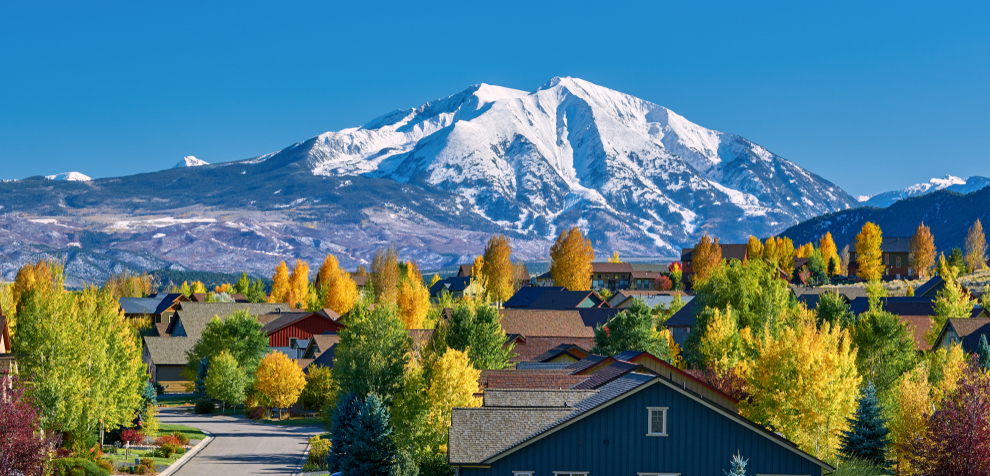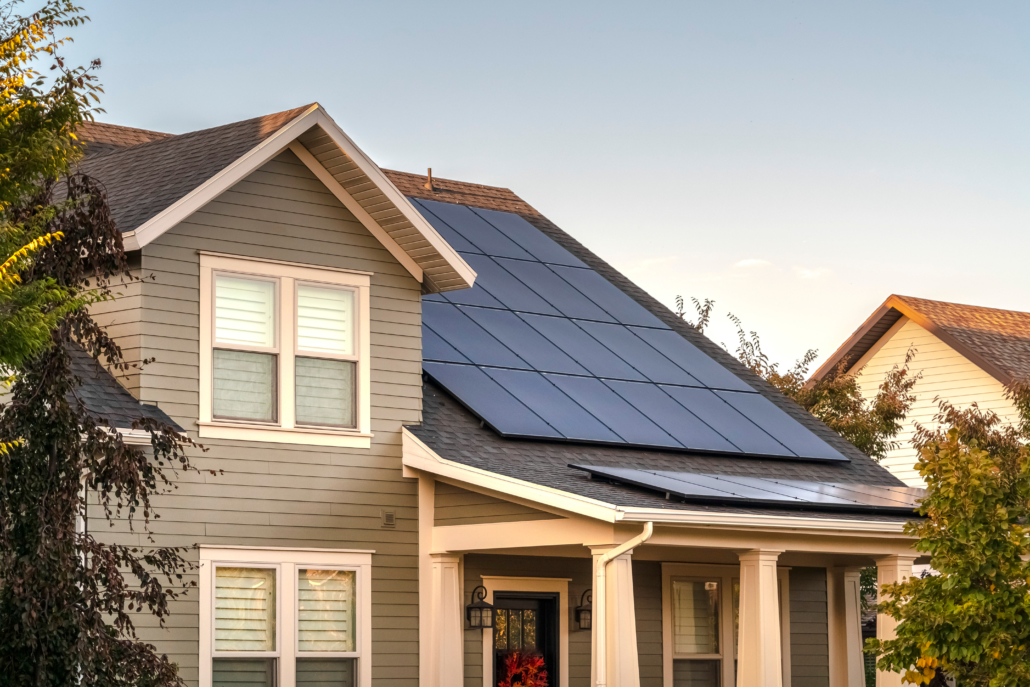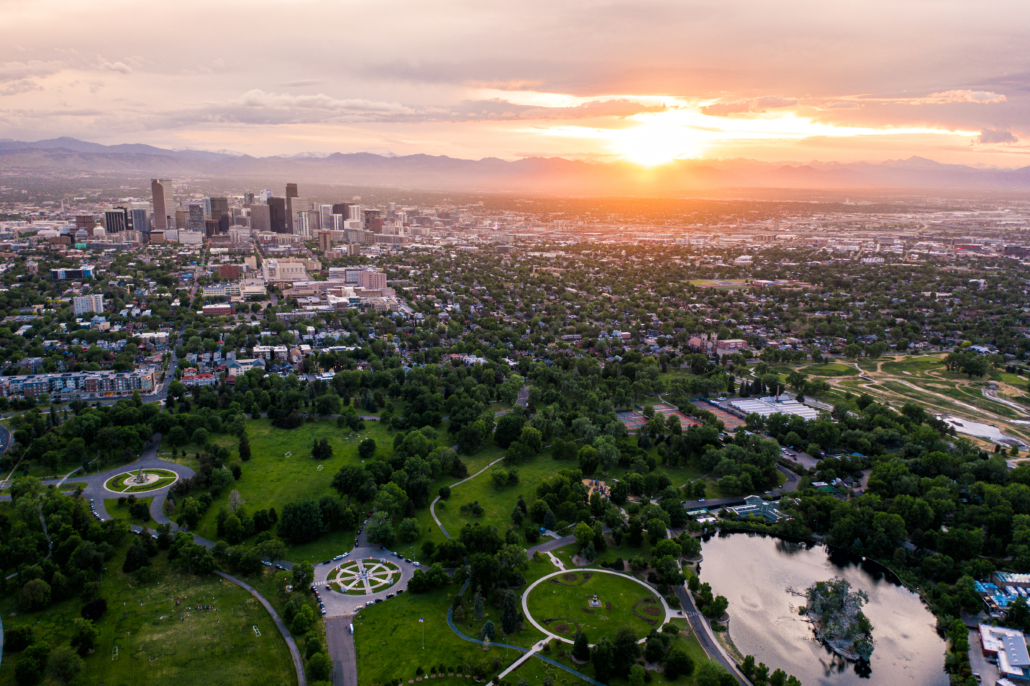Why Colorado needs greener buildings to fight climate change and air pollution
When we think of big polluters, we usually conjure up images of oil refineries, coal plants, fracking operations, and other such major industries. Industrial pollution is a big problem that Conservation Colorado is working hard to tackle. At the same time, some of our pollution comes from less obvious sources.
Millions of homes, apartment buildings, offices and commercial spaces across Colorado are actually emitting climate-causing carbon and other hazardous pollutants into our air, from things as routine as furnaces and water heaters. All these emissions make buildings the third largest source of climate pollution in the state. In order for Colorado to play a leading role in cutting climate-causing emissions, we have to tackle emissions from buildings. In doing so, we can also improve indoor air quality and help families save money on energy bills.
That’s why Conservation Colorado supports HB22-1362, which will modernize building energy codes to ensure new construction is prioritizing the planet and our health. Read on to learn more!
Why buildings are a major source of climate pollution
Buildings contribute to climate change on a few different levels: in how we construct them, how we heat, cool, and power them, and where they’re located. First, there is a significant impact to extracting and manufacturing the building materials, transporting those materials to the job site, and the construction practices used. Materials like concrete, steel and aluminum have a massive global carbon impact.
A building’s carbon footprint continues growing through its lifespan. Unfortunately, many buildings still use on-site fossil fuels like natural gas for cooking, heating, and cooling systems. And powering energy-inefficient buildings uses up an unnecessary amount of electricity. These emissions are contributing to climate change and harming our health. At this point, burning gas, wood, and biomass in buildings is causing more negative health effects than burning coal in most states.
Finally, if we build homes far away from schools, workplaces, and entertainment, people have to travel further in their daily lives. This increases traffic pollution and transportation emissions, Colorado’s largest source of climate pollution.
Tackling buildings is a complex problem. Our attention this year is on reducing the carbon footprint of new buildings. The world’s building stock is expected to double by 2060, and Colorado is no exception from those trends. If we don’t act now, thousands of new buildings will be locked into emitting unnecessary carbon to the atmosphere for decades to come. To reduce the impact and meet Colorado’s targets for dramatically cutting emissions, we need to update the state’s minimum energy code requirements.
How HB22-1362 will help
HB22-1362 will set into motion a much-needed update to Colorado’s building codes to ensure new buildings are more energy-efficient and climate friendly. The bill will establish a new Energy Code Board made up of local governments and building industry stakeholders to review and approve the 2021 International Energy Conservation Code (IECC), along with electric and solar-ready provisions. The 2021 IECC is the most efficient model code yet, saving nearly 10 percent more energy than the previous code. Then, in a step that makes Colorado’s building code policy nation-leading, the Energy Code Board will also develop a low energy and carbon code. Local governments must in turn adopt these codes by mid-2026, when updating any other building codes.
If the bill passes, residential and commercial buildings will be constructed to ensure they are ready for solar panels, electric vehicle charging, electric heating, and electric water heating. Energy-efficient insulation, windows, and lighting will also come standard. Buildings built under this code will contribute far less to climate change and be ready for even more climate-friendly technologies in the future. Plus, residents will save money on their energy bills and enjoy better indoor air quality.
As we fight to reduce pollution, we’re prioritizing equity
Conservation Colorado’s Climate Advocate Lorena Gonzalez and Protegéte Director Beatriz Soto have worked hard to ensure that HB22-1362 will reduce emissions from new buildings while also providing equitable opportunities to contractors, saving people money, and ensuring that communities most impacted by systemic injustice have the opportunity to benefit from the resources this bill provides.
Soto, who is a LEED-certified architect, knows the importance of this firsthand. “The Latinx workforce is the backbone of the construction industry. Many trades across the construction industry, like insulation, drywall, framing, and roofing, are dominated by monolingual Spanish-speakers,” says Soto. “We know that meeting strict code requirements and obtaining certain licenses can exclude some builders or contractors, especially when training isn’t available in their language. These new requirements will only be equitable and effective if we invest in the workforce who will carry them out.”
The bill includes provisions to provide technical assistance on the new code requirements in Spanish. It also establishes two building decarbonization grant programs for electrifying public buildings and high efficiency electric heating and appliances at the neighborhood scale. These programs direct at least 30 percent of the funding to disproportionately impacted, low-income, and just transition communities, and include grant assistance for entities who may not have experience in applying for this type of funding.
All Coloradans deserve homes and buildings that are efficient, resilient, healthy, and ready for the future. Do you agree?








